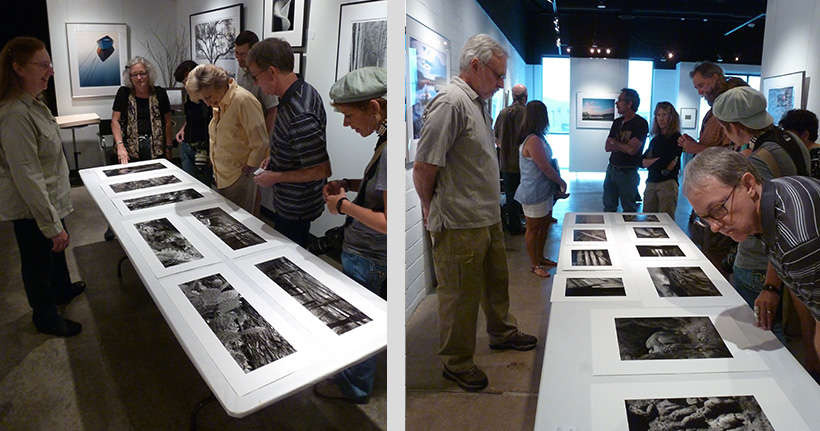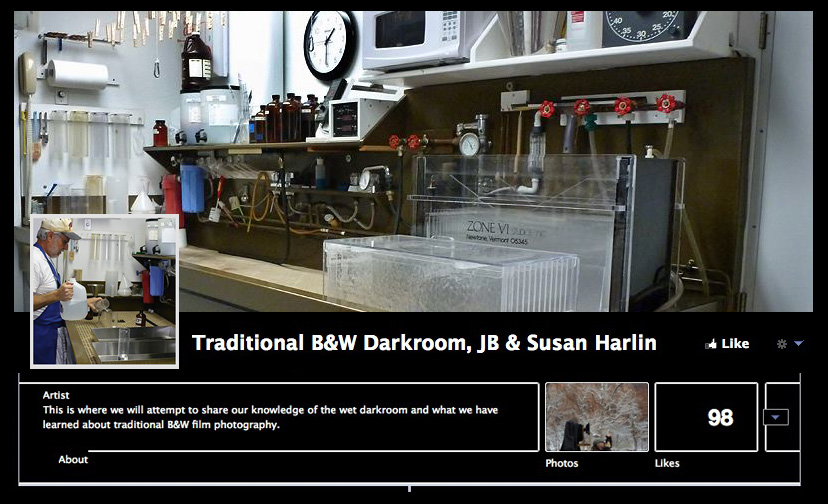ULF Photography
I DO NOT PHOTOGRAPH PEOPLE
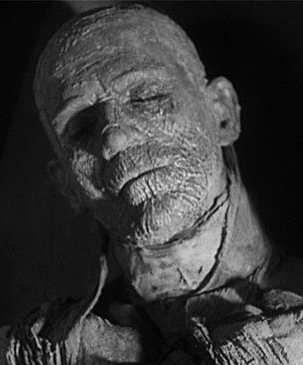 I find it odd that when you tell someone you are a photographer they immediately assume you are the local Olan Mills studio operator. They either want a family portrait or have a daughter that is getting married and want to hire you. I guess there is a mass disconnect when it comes to the word photographer. Should I introduce myself as a Fine Art Photographer?
I find it odd that when you tell someone you are a photographer they immediately assume you are the local Olan Mills studio operator. They either want a family portrait or have a daughter that is getting married and want to hire you. I guess there is a mass disconnect when it comes to the word photographer. Should I introduce myself as a Fine Art Photographer?
Maybe Fine Art Photographer is a little too stiff for an opener. Perhaps it would be better if I told people I am a photographic artist. That should throw them into a tailspin. Or should I start off by saying I am a photographer that does not work with people? I seem to face this dilemma at times and it is hard to convince some that I only shoot rocks and trees. Should I ask a person if they have some interesting rocks or trees in their back yard that they would like me to photograph? How about a nice 11×14 contact print of that old barn out on granddad’s old farm?
I am not out to offend anyone. I have no need to place myself above any portrait photographer, it is that I just don’t do people. It takes a special kind of person to coax out those really interesting images of a person. The knack of catching that expression just so. I’m no good at it and I will be the first to admit that to anyone.
I don’t like photographing anything that moves. I hate the wind. Seems every time I find something really interesting and I check and see the wind is absolutely calm. . . well. . . you know what happens. You get the camera all in place, pull the slide, get the shutter release in hand and there is just this little hint of a breath of moving air. Just enough to make some little feathery leaf or weed wiggle. I shoot with big cameras. An 8×10 is my every day shooter. I shoot with very small apertures and very long exposure times. If anything I have chosen to be perfectly sharp moves, I have just wasted a sheet of film. Depth of field is very scarce. How do you get someone to not move a muscle? Guess if I were photographing people I would be best suited to work with the dead. Would that suffice as an inanimate object?
My hat is off to all you portrait shooters. I really don’t know how you do it. . . or I should say I could not do it with any degree of success.
So for those of you that are not familiar with Fine Art Photographers, the next time someone tells you they are a photographer, be sure to ask first if they do people. Don’t just assume that photographer translates to Olan Mills Portrait Studio.
JB
EDWARD WESTON AND HIS DAYBOOKS
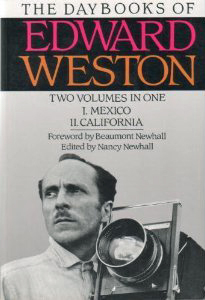 Have you ever wondered what the life of an artist would be like? Edward Weston was not only an artist, he was obsessed by his art. Every day before everyone else was awake, Edward would write in his Daybook. His journal has become a classic of photographic literature. At one point he destroyed some of his daybooks, but those that remained were eventually transcribed and published.
Have you ever wondered what the life of an artist would be like? Edward Weston was not only an artist, he was obsessed by his art. Every day before everyone else was awake, Edward would write in his Daybook. His journal has become a classic of photographic literature. At one point he destroyed some of his daybooks, but those that remained were eventually transcribed and published.
Weston was a towering figure in twentieth-century photography, whose restless quest for beauty and the mystical presence behind it resulted in a body of work unrivaled in the medium. John Szarkowski observes that “It was as though the things of everyday experience had been transformed… into organic sculptures, the forms of which were both the expression and the justification of the life within… He had freed his eyes of conventional expectation, and had taught them to see the statement of intent that resides in natural form.”
This is a fascinating and informative read. A look into the life of a dedicated artist. If you are serious about your photography. . . if you think you are serious about your photography. . . read “The Daybooks of Edward Weston” and see how you compare.
JB
JB
DIY PREPACKAGED DARKROOM CHEMISTRY
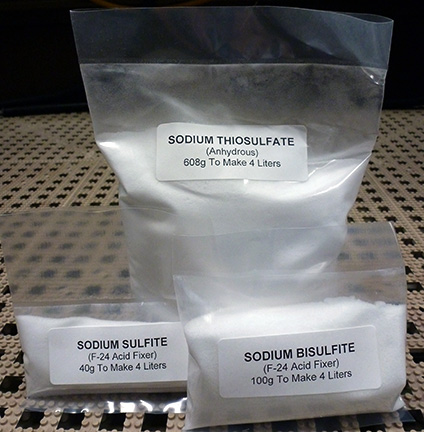 Mixing our own darkroom chemistry has become the established method around here. Since the demise of Zone VI chemistry, we are pretty much on our own when it comes to processing chemistry. Things like PyroCat-HD can easily be mixed by weighing out the necessary materials each time, since you are mixing stock solutions and it is not something you have to do every time you process film. I mix up the print developer as two stock solutions that are combined when a printing session starts. I keep one and two liter bottles of part A and B mixed and ready to go. That is just another element of the process. On the days we are not doing darkroom work, I am in there cleaning and mixing solutions.
Mixing our own darkroom chemistry has become the established method around here. Since the demise of Zone VI chemistry, we are pretty much on our own when it comes to processing chemistry. Things like PyroCat-HD can easily be mixed by weighing out the necessary materials each time, since you are mixing stock solutions and it is not something you have to do every time you process film. I mix up the print developer as two stock solutions that are combined when a printing session starts. I keep one and two liter bottles of part A and B mixed and ready to go. That is just another element of the process. On the days we are not doing darkroom work, I am in there cleaning and mixing solutions.
One thing you use a lot of when making large prints is Fixer. We go through a lot of fixer, and I do not believe in skimping. The F-24 formula will fix 25 8×10 prints (or equivalent area, 80 sq inches per print) per liter. . . that would be 100 per four liter batch. I never run fixer more than 60% of capacity, so that would be 60 8×10’s per four liter batch. Another darkroom rule is, we never pour anything back into the container. . . most of the time. Used fixer is dumped into buckets in the garage and when I get a batch, it goes through the silver recovery unit.
Because we purchase Sodium Thiosulfate in 50 pound bags, this can present a storage problem, let alone a hassle for measuring and mixing. It was obvious that we needed to find some convenient way of storing and measuring large volumes of dry material. The solution is actually not that difficult. We already had an impulse heat sealer, all that was needed was bag material. You can purchase continuous rolls of poly tubing, and 4mil is a good choice. Making a custom bag is easy. Heat seal the end, cut off the length you need, measure the chemical, pour into the bag, squeeze out the excess air, and heat seal the other end. The only other thing you need is a label, or you can write on the bag with a marker.
For the F-24 Fixer we use, I measure out the correct amount of all three ingredients and seal them into an appropriate size bag. I use four inch wide 4mil tubing that comes on a 1,500 foot roll. I print off an adhesive label for each bag and store the small bags in plastic shoe containers and the larger bags in five gallon plastic buckets. When I need to mix fixer, just grab three bags, run water into a suitable container at the appropriate temperature, cut open the bags and stir.
You can purchase Poly Tubing from suppliers like ULINE in widths from 1 to 48 inches on large rolls. They also sell Impulse Heat Sealers in various sizes. The unit we have is the 12 inch model and has seen a lot of use over the years. Be sure to order a spare heating element service kit. Pick up some adhesive labels for your computer printer and you have everything you need to make your own prepackaged darkroom chemistry.
JB
DILUTING PERCENT SOLUTIONS & STOP BATH
I was thinking about how you calculate percent solutions the other day when discussing Glacial Acetic Acid mixtures to make stop bath. I knew I had seen an easy method, but I could not remember how it worked. Certainly it is fine to just follow directions, but what if you want to know how the process works, or you need to calculate some dilution other than the norm? I thought the equation was called the ‘X’ System or something similar. A search on the Internet did not turn up what I was looking for though. Seems things always come to me when I take a nap. . . this time I had to sleep on this one for several days before it came to me.
The simple procedure for calculating percent dilutions is called the Criss-Cross method and is really easy, if you can remember how it works. Once I had the right description, it was easy to find more information, and it is really quite simple.
Here is the Criss-Cross formula;
To work the Criss-Cross formula do the following:
A = the % dilution of the solution to be diluted
B = the % dilution of the diluting solution (for Water this value is Zero)
C = the % dilution desired
X = C – B
Y = A – C
Diluting X parts of A with Y parts of B will yield a % solution equal to C.
I know it all sounds complicated and it really is much more difficult to explain than it is to actually work the problem. So, lets go through an example that hopefully will make it more understandable. Most all agree that an acid stop bath should be somewhere between a 1-2% dilution of Acetic Acid in water. I have always used a 1% solution and that is what we still use today. For example, let’s dilute 28% Acetic Acid stock to a 1% mixture for stop bath. Plug in the correct values, then perform the calculation. Enter 28% for term A, 0 for term B, 1% for term C, then perform the calculation.
You will find that if you mix 1 unit of 28% Acid with 27 units of Water you will get a 1% solution for your stop bath. Remember, we are working with ratios and the Units can be anything desired, as long as they are the same Units. It could be a mixture of 1:27 ounces, gallons, milliliters, liters, whatever units you desire. You can change the values of X and Y if you want. Just keep in mind that you have to change both Units by the same amount. If you multiply the ratio of 1:27 by 2, you would have a ratio of 2:54 Units. You could also divide the Units for smaller volumes.
For the sake of a working example, if you multiply the ratio of 1:27 in the example above by 40, you get a ratio of 40:1,080. This is how I dilute 28% Acetic Acid to a 1% solution for paper stop bath. I use even numbers of 40:1,000 milliliters. Plenty close enough for photography.
Hope this helps. . . it is not difficult if you can remember the formula.
JB
D/FW LF GROUP OUTING, ST. OLAF’S CHURCH IN CRANFILL GAP, SAT 4/27
Who is up for some shooting this Saturday, April 27? We will be meeting at St. Olaf’s Church in Cranfills Gap. The gate is usually opened after sunrise, scheduled for an early 6:49. Michael says, from Plano it is a good haul, so he would not make it until about 8:30 at the earliest. The sun will still be low enough to provide for some great shadows. There is a German restaurant a few miles north – on the way home – where we can stop for lunch. http://zurautobahn.com/OurMenu.html
Hope you can make it, we always have a good time. . . and don’t forget to bring a film camera and some film!
JB
Traditional B&W Darkroom, JB & Susan Harlin. . . Our New FaceBook Page
If you are a FaceBook user, please drop by our new page titled “Traditional B&W Darkroom, JB & Susan Harlin” and be sure to click the LIKE button to follow our latest post and discussion. As always, we support film and the traditional wet darkroom. Come join in the conversation.
JB
THANK YOU
 We would like to thank everyone that took the time to see our exhibition “A B&W INTERPRETATION OF NATURE” that ran the month of March at the Goodrich Gallery in Dallas. We had a lot of comments, met many new people and heard a lot of encouraging remarks. The reception was great fun and we appreciate everyone that stopped by.
We would like to thank everyone that took the time to see our exhibition “A B&W INTERPRETATION OF NATURE” that ran the month of March at the Goodrich Gallery in Dallas. We had a lot of comments, met many new people and heard a lot of encouraging remarks. The reception was great fun and we appreciate everyone that stopped by.
We would also like to thank the Goodrich Gallery, their committee, and staff for their support and grand hospitality. Everyone was very knowledgeable and helpful and were key to the success of this exhibition.
Again, thanks to everyone for your continued support.
JB & Susan
CONSISTENCY IS THE SECRET
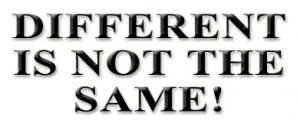 Working in the wet darkroom processing both film and paper is nothing more than simple lab work. You are a lab technician in charge of performing a series of processes. These processes must be done exactly the same way each and every time in order to guarantee consistent results. Any variation in process or mixtures will affect the end result.
Working in the wet darkroom processing both film and paper is nothing more than simple lab work. You are a lab technician in charge of performing a series of processes. These processes must be done exactly the same way each and every time in order to guarantee consistent results. Any variation in process or mixtures will affect the end result.
You have to keep track of exactly how you process both film and paper. Consistency is of paramount importance when processing film. You only have one chance with your film and if you make a mistake there is no going back. If you happen to make a mistake when printing you can always start again. You only lose a sheet of paper. With the film, you loose the image forever.
It is imperative that you do everything exactly the same every time. Any variation, even down to the tray sizes and volume of chemical can affect the end result. Film processing is not hard, but you have to do everything exactly the same every time. It is also worth mentioning that you have to be scrupulously clean. Contamination of any of the processing chemicals can cause disastrous results. One thing that is easily overlooked is mixing up the stock solution tops when using developers that have more than one part. Only remove one cap at a time and replace each before opening the next. Also, mark each cap and never mix them up.
Good darkroom habits begin with keeping notes. I keep a three ring binder containing notes on all of the procedures that I use in the darkroom. I have notes for each film size that includes the size of the trays, chemical mixtures, volumes of chemicals, and number of sheets of film for each processing run. When I begin a film processing session, the first thing I do is grab my darkroom notes. I make sure that I do the exact same thing every film run.
Even the printing process needs to have order and a plan to ensure you do not end up chasing your tail. My darkroom notes also contain information that pertains to printing. Though not as critical as film, I want to be sure I do things in an orderly and repeatable manner. I also want to be sure I mix all of my chemicals correctly, so everything is written down.
One of my favorite darkroom stories comes from Fred Picker. In his information packed little book titled “ZONE VI WORKSHOP” he describes his early days trying to get a handle on the process of B&W printing. If you have a copy of this gem of a book, turn to page 40 and read the chapter titled “THE CUSTOM LAB.” This is a really good account of how NOT to print.
I keep notes on most everything I do in the darkroom. There are times when I cannot remember exactly how I did something. With my notes there is no question as to how to remain consistent. As Fred Picker used to say, “DIFFERENT IS NOT THE SAME!”
JB
Dallas / Fort Worth LF Gathering, Saturday March 16, 2013
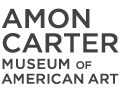 We are heading to the Amon Carter on Saturday morning, March 16. There is a new exhibit, “Big Pictures“, that opened on last week Tuesday and runs through the 3rd week in April. We will meet at the museum at 10AM. Following our visit we’ll head over to Lucille’s for one of their wonderful lunches. I figure about 11:30 at the latest.
We are heading to the Amon Carter on Saturday morning, March 16. There is a new exhibit, “Big Pictures“, that opened on last week Tuesday and runs through the 3rd week in April. We will meet at the museum at 10AM. Following our visit we’ll head over to Lucille’s for one of their wonderful lunches. I figure about 11:30 at the latest.
And, yes we need to firm up some Spring photography dates. Before we know it, it will be 100+ degrees again.
Please let me know if you can make it to Lucille’s; I will call them Friday morning to reserve a table.
Have a great week y’all
Michael
Drop us an e-mail or post to Michale’s thread on the LF Forum HERE.


